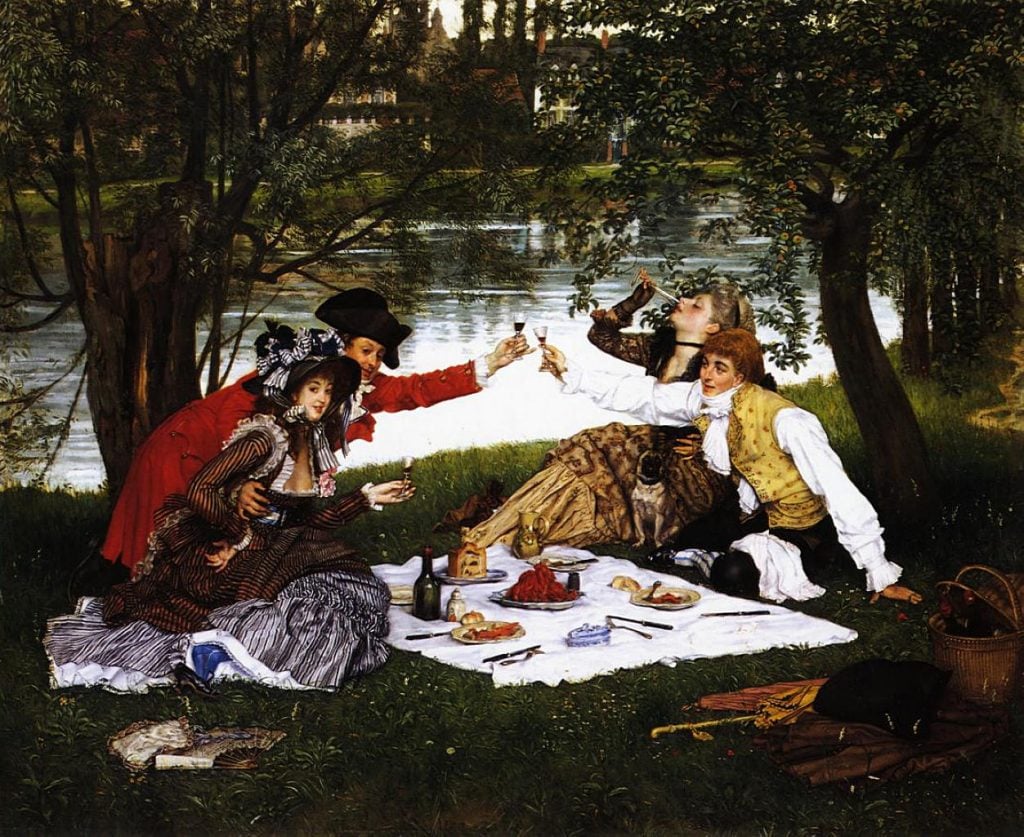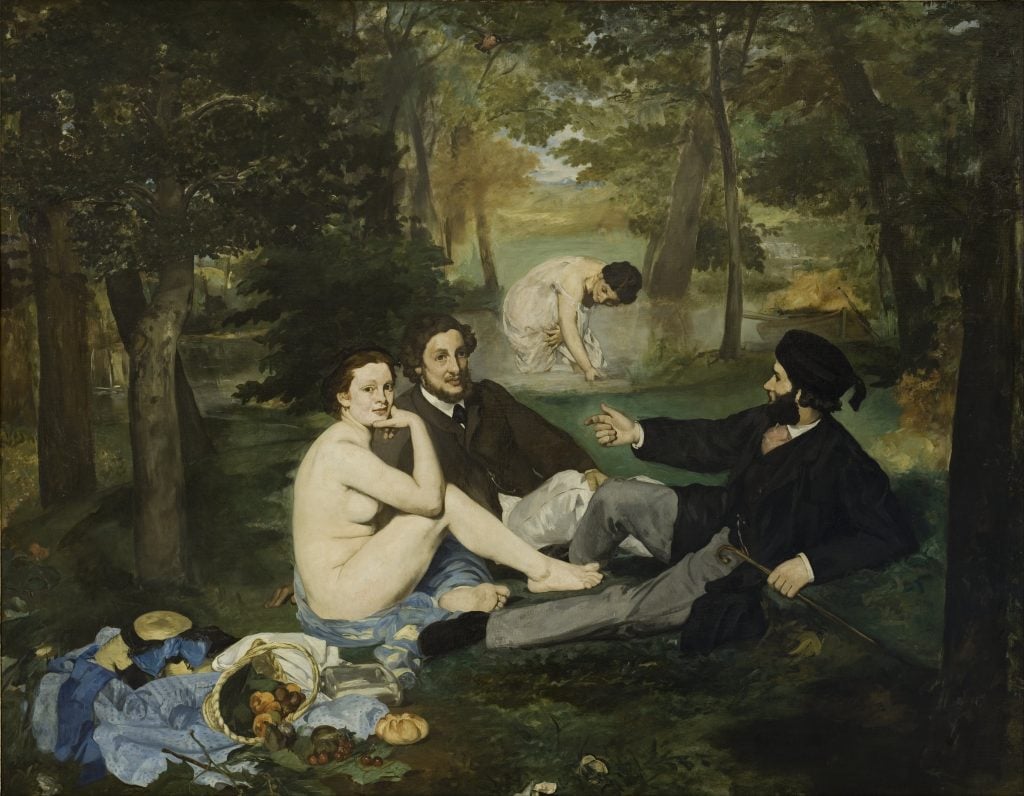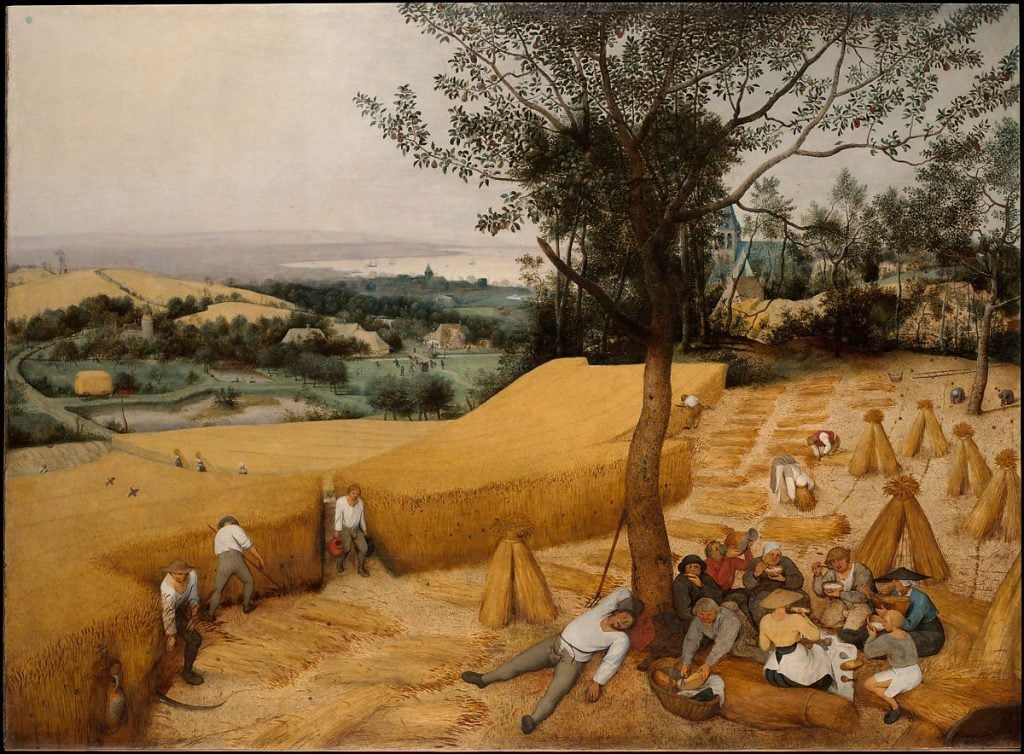Shahzia Sikander writes for the NYT series called The Big Ideas, (series page) in which writers respond to a single question: What do we believe?
Source: NYTimes
Shahzia Sikander: What We Believe About Culture
Art helps reverse stereotypes and creates a path for better representation in a complex and dynamic world.
 |
| "Housed" (1995) is about the constraints of escaping an imprisoning representation. It was a response to the Orientalist obsession with the veil in the Western imagination. What do you see: a perforated armor or a shell, a mask or a shelter?Credit...“Housed,” 1995. Gouache and charcoal on clay-coated paper board. 106.7 x 80 cm. Courtesy of the artist and Sean Kelly Gallery. |
By Shahzia Sikander
May 25, 2021
This personal reflection is part of a series called The Big Ideas, in which writers respond to a single question: What do we believe? You can read more essays by visiting The Big Ideas series page.
Being Asian-American — or Asian-anything — in the West often means living the paradox of being invisible while standing out. It’s a broad racial category in which many different nations, ethnicities, classes, cultures, histories, communities and languages have to vie to be recognized. The construct of a single person’s identity may vary based on personal experience, but it is always tied to society’s deep racial hierarchies, which are based on unfounded beliefs and irrational fears perpetuated by stereotypes.
Confoundingly, the opposite experience — living in the majority while still being erased — is just as commonplace elsewhere in the world. Growing up in the 1980s in Lahore, Pakistan, I saw the legacy of a singular, colonial interloper as it whitewashed the nuances and history of local and national identities. I attended an English-medium school, which at the time was seen as culturally advantageous. No one questioned the dated English curriculum, a residue of the British colonial era, or why examination papers were sent to Cambridge to be graded. Textbooks did not reflect local realities or languages. To this day, I need help reading Urdu poetry, and I never became fluent in Punjabi.
When I went to the National College of Arts in Lahore, traditional miniature painting was stigmatized as kitsch and derivative. “Miniature,” a colonial term, encompassed premodern Central and South Asian manuscript painting. There were barely any students studying it, although interestingly, the subject was initially taught as part of an English colonial project meant to revive Indian crafts. The school’s first principal was the British colonial official and artist John Lockwood Kipling, the father of the author Rudyard Kipling.
My interest in premodern manuscripts was sparked in response to that largely dismissive attitude, as well as by a collective lack of deep cultural knowledge in both Pakistan and the United States. Because artifacts and historical paintings from South Asia existed mostly in collections in the West, my peers and I had no real connections to our own region’s historical art traditions.
 |
| “Un-seen,” 2011. Light projection into space. Shangri La Museum of Islamic Art, Culture & Design, Honolulu. Courtesy of the artist and Sean Kelly Gallery. |
Our understanding of art history has long been Eurocentric, so we come into the world primed to belittle or dismiss anything outside the Western canon. Beliefs in binaries such as East-West, Islamic-Western, Asian-White or oppressive-free are deeply entrenched in how we view the world. When we inherit those one-sided, polarizing constructions from the past, we unconsciously keep marching down the same paths.
History itself is effectively just an account of the movement of objects and bodies. Trade, slavery, migration, colonial occupation — these are underlying currents, the root axes of modernity. How history is told, and who gets to tell it, exposes the hierarchies of power in our world.
During the European colonial era in the Indian subcontinent, for example, many South Asian manuscripts were dismembered, scattered and sold for profit, stunting the canon of Central and South Asian pictorial traditions for good. The most significant manuscripts can be found in the collections of Western museums like the Metropolitan Museum of Art, the British Museum and the Royal Library. And it’s no secret that one of the most significant manuscripts, the Shahnama of Shah Tahmasp from 1524 — the region’s equivalent to the Mona Lisa — was cut up and sold piecemeal in secondary auctions. The Tehran Museum of Contemporary Art traded a de Kooning for some of its pages.
As I studied and taught miniature painting in Lahore, I became attuned to the art form’s complicated provenance and how it could be made to yield to new narratives. Transforming its status from a traditional and nostalgic form into a contemporary idiom became my personal goal. I carried that burden to M.F.A. programs in the United States in the early 1990s, when most people weren’t familiar with the style. Because my work engaged with traditions that did not sit at the center of Western art history, it would often be glossed over and interpreted very narrowly in terms of my biography. One of the first questions I was asked in graduate school was, “Are you here to make East meet West?”
Thus began a decades-long experience of daily indignities. I, like many other Asians, am routinely spoken to in loud, slow English. People ask me where I’m really from, or if I’m the new nanny or a practicing Muslim. I am subjected to hours of interrogation by Homeland Security officers almost every time I travel to or from the United States.
To counter that, I use my work to deconstruct exclusionary racial representations and stereotypes, rejecting the colonial and male gazes and reimagining archetypal characters to tell richer stories. When I create contemporary miniatures in which women resist simplistic categorizations, I am responding to the difficulty of finding feminist representations of brown South Asians in contemporary culture.
 |
| "Promiscuous Intimacies" (2020). Culling protagonists from my paintings to create sculptures that explore the "promiscuous intimacies" of multiple times, spaces, art historical traditions, bodies, desires and subjectivities, I examine how female bodies bear the symbolic weight of communal identities from across multiple temporal and geographic terrains.Credit...“Promiscuous Intimacies,” 2020. Patinated Bronze. 42 x 24 x 18 inches. Courtesy of the artist and Sean Kelly Gallery. |
My art also reflects the back-and-forth of being both invisible and hyper-visible in the United States by illuminating the mercurial nature of identity — it’s only partially in our control; the rest comes from other people’s perceptions of us. For some projects, I’ve tapped into my own experience of being in America and how I’ve been mistaken for Mexican, Hawaiian, Bengali, Nepalese, Native American, Chinese, Guatemalan, Puerto Rican or Malaysian, depending on what I wore and where I was in the country. I try to uncover what social forces entitle people to speculate about my origins, and how these forces (mis)inform their guesses.
The female avatars in my art have thoughts, emotions, feelings and iconographies born out of the intellectual and virtuosic manuscript traditions of Central, South and East Asia. They come from vast, heterogenous, syncretic, layered visual histories with many different roots: Jain, Buddhist, Zoroastrian, Jewish, Christian, Hindu, Islamic, Sikh. Women in my paintings are multidimensional — at times androgynous, and always complex, proactive, confident, intelligent and, in their playful stances, connected to the past in imaginative ways without being tied to a heteronormative lineage or conventional representations of diaspora and nation.
By decolonizing and reimagining miniature paintings through feminist critique, I recontextualize those stories. It’s a reminder that cultures are dynamic, not static, and histories are multidimensional.
Language changes, and today, scholars and artists of manuscripts have begun to move away from the term “miniature” as they decolonize their fields. Finally, I am not alone. There are many contemporary artists engaging the premodern manuscript art form in different ways. Our voices tell stories from many perspectives, helping to give a more complete view of both history and the present.
What we believe shifts and evolves based on how we approximate, reproduce and re-enact certain aspects of our own culture and history. If we use art, media and culture to reverse stereotypes about gender, race, immigrants and the unfamiliar, the beliefs we pass on to future generations will reflect the complex and dynamic world we live in.
Shahzia Sikander (@shahzia.sikander) is a MacArthur Fellowship-winning visual artist. A traveling retrospective exhibition of her work, organized by the RISD Museum, will be on display at the Morgan Library & Museum in New York from June 18 to Sept. 26, 2021.







